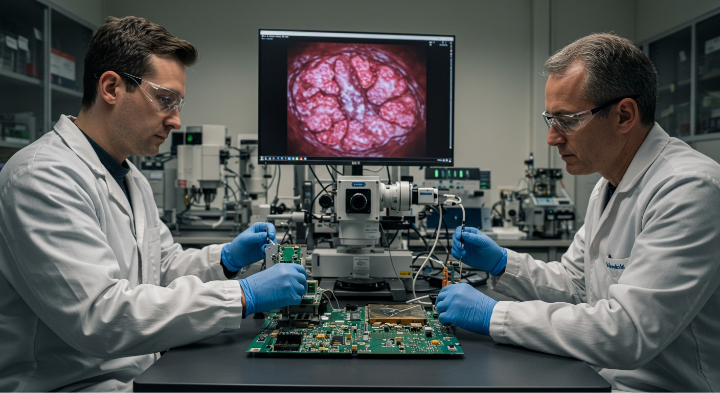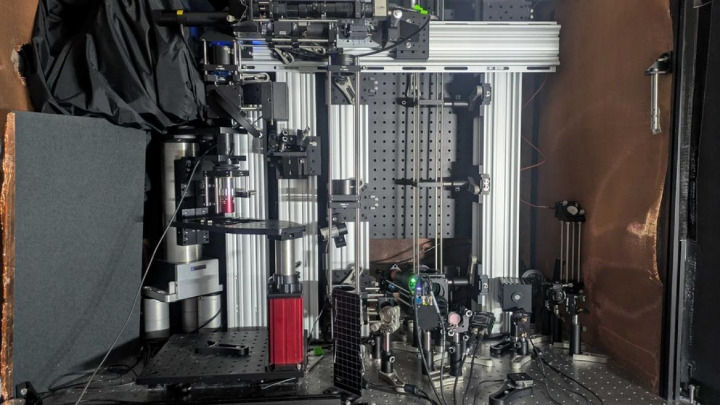Next-Generation Imaging in Living Tissues Revolutionizes Neuroscience and Cancer Diagnosis
- Oct 8
- 2 min read

Scientists and engineers from institutions including MIT and the University of Arizona are driving a new era in imaging technology, developing systems that promise to obtain exceptionally deep and clear views inside the body and living tissue without the need for invasive procedures. These advances aim to overcome the limitations of current techniques that struggle to balance resolution, contrast, and depth penetration.
MIT researchers have developed a new microscope system that combines several cutting-edge technologies to obtain precise images of molecules deep within live brain tissues with single-cell resolution.
This system, called the "Multiphoton-In and Acoustic-Out" platform, uses a technique known as label-free multiphoton photoacoustic imaging (LF-MP-PAM). It works by focusing an intense, extremely short burst of light (a quadrillionth of a second long) at a longer wavelength. This longer wavelength (described "like fog lamps") allows the light to penetrate deeply into the tissue with less scattering.
Instead of solely detecting the weak fluorescent signal, the system detects sound waves generated by localized thermal expansion (about 10 microns) within the cell. A sensitive ultrasound microphone detects these waves, and software transforms the acoustic data into high-resolution images.
This method is "label-free" (it does not require added chemicals or altered genes), making it potentially valuable for use in humans, for instance, during brain surgeries. The team successfully detected NAD(P)H, a molecule associated with general cell metabolism and specific neuronal electrical activity, all the way through samples such as a 1.1-millimeter "cerebral organoid" (a 3D, mini brain-like tissue generated from human stem cells) and mouse brain tissue. A depth of 1.1 millimeters is more than five times deeper than other microscope technologies can resolve NAD(P)H within dense brain tissue. Given these results, researchers are confident that full imaging at depths of 2 millimeters in live brains is entirely feasible.
In parallel, a University of Arizona research team received nearly $2.7 million dollars from the NIH's Common Fund Venture Program to advance optical technology aimed at improving the diagnosis and treatment of skin cancers, specifically nonmelanoma types (such as basal cell carcinoma or squamous cell carcinoma).
This new approach is based on Synthetic Wavelength Imaging (SWI). SWI uses two separate illumination wavelengths to computationally generate a virtual, "synthetic" imaging wavelength. This synthetic wavelength offers a signal that is more resistant to light scattering inside the tissue, while still leveraging the high contrast information provided by the original illumination wavelengths.
This breakthrough is crucial because nonmelanoma skin cancers often vary widely in size, depth, and pattern of invasion, requiring imaging tools that can accurately assess tumor margins and monitor treatment response in real-time.
By pairing this resilience to scattering with advanced computational algorithms, the team aims to break free from the conventional tradeoff between resolution, depth, and contrast. The potential of SWI extends to additional potential avenues in biomedical imaging, such as novel detection methods for breast cancer or imaging deep inside the human brain.










Comments